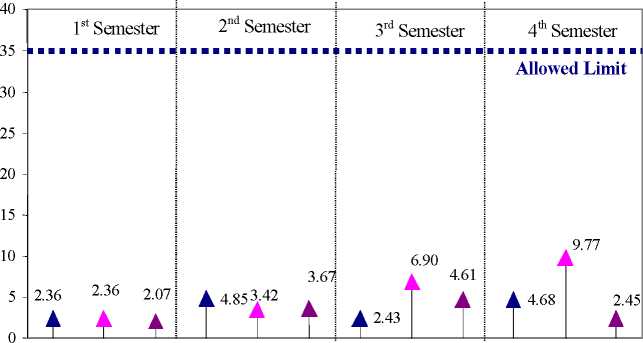group, the agreed performance guidelines seem to have produced a moral hazard kind-of-
situation, where the worst type of behaviour emerged in all companies due to the aforementioned
lax and over-generous permissible quality parameters.
Figure 3.12
Average Frequency of Interruptions

A Elfeo A Cessa A Sepsa
Source: Superintendency of Electricity
As for the second indicator of quality, total time of interruptions per consumer, it measures the
average time that every consumer is deprived of electricity during a semester. In line with the
first quality indicator, results are presented for the 2 groups of operators already defined.
The first group (Cre, Electropaz and Elfec) has an allowed time limit of 20 hours. This limit was
not surpassed by any of the companies in the 4 semesters analyzed. Figure 3.13 summarizes
results for this second indicator of quality.
22
More intriguing information
1. Innovation Policy and the Economy, Volume 112. Motivations, Values and Emotions: Three Sides of the same Coin
3. The name is absent
4. Ein pragmatisierter Kalkul des naturlichen Schlieβens nebst Metatheorie
5. Spatial agglomeration and business groups: new evidence from Italian industrial districts
6. Innovation Trajectories in Honduras’ Coffee Value Chain. Public and Private Influence on the Use of New Knowledge and Technology among Coffee Growers
7. The English Examining Boards: Their route from independence to government outsourcing agencies
8. The name is absent
9. Firm Creation, Firm Evolution and Clusters in Chile’s Dynamic Wine Sector: Evidence from the Colchagua and Casablanca Regions
10. The name is absent